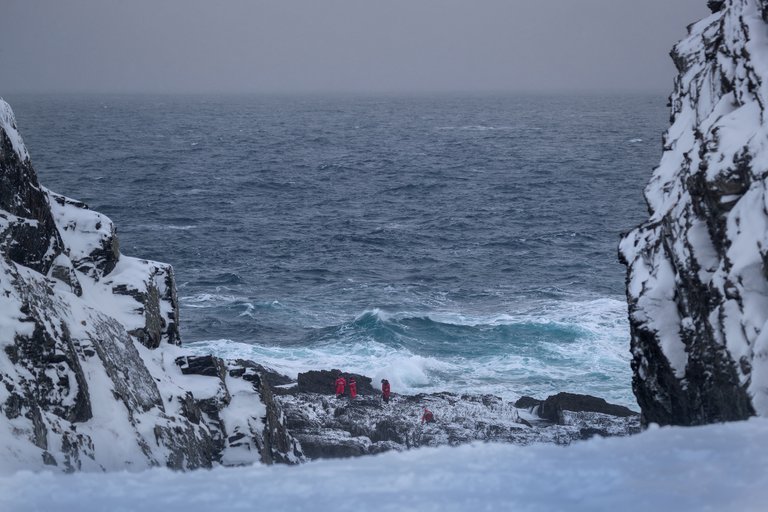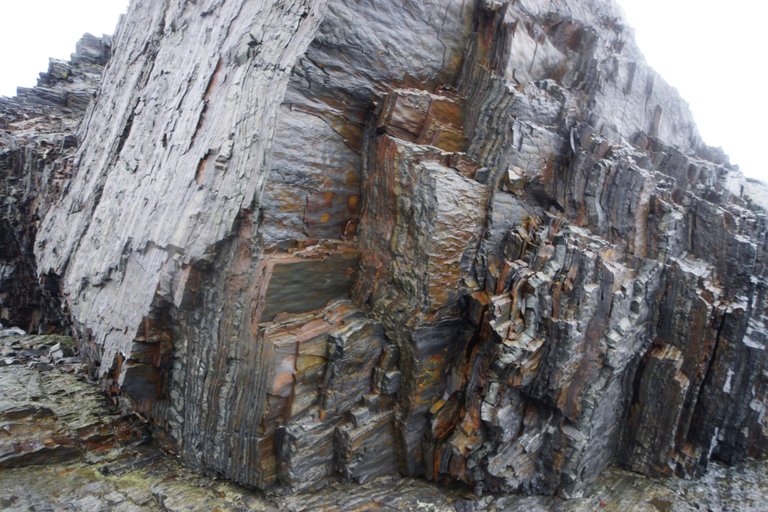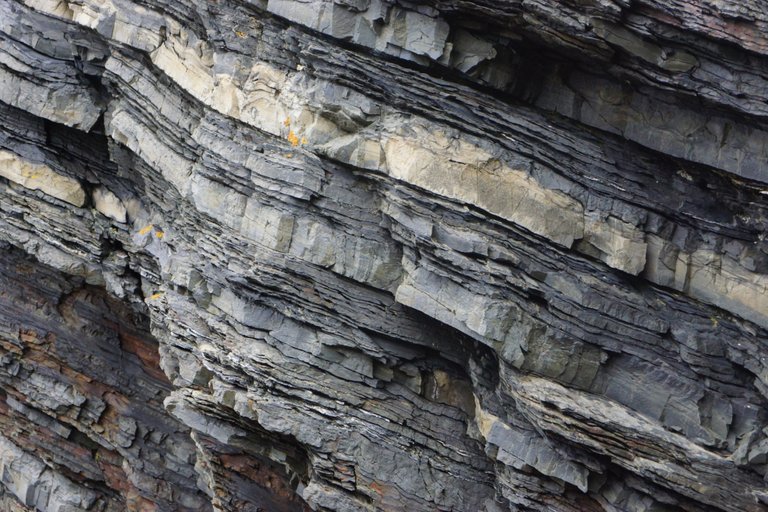This weekend I decided to give myself a little test. Get to the northernmost point on the continental part of the country. It may sound like something that is very far away. Well, for me it's only 140 kilometers away. However, if we were talking about ordinary roads, then we could count on 3 hours of a quiet journey. But here, where the roads abruptly end, and those that are still may be covered with snow and ice, and others disappear with the tide, these three hours turn into 6-8 hours, if you're lucky.


The day started wonderfully, with a bright blue sky, light clouds and a playful sun that is about to go into round-the-clock operation in the next couple of months. I couldn't even believe that everything was going so well. But I've lived here long enough to know that the weather can change in just a few minutes and you will be covered by a blizzard. Therefore, I raced as fast as possible in order to have time to skip one of the sections with a low tide.


I've always liked the combination of local colors in the cold season. White, blue and, blue and gray. That's all we have here most of the year. Beauty in minimalism, clearly separated elements, each element in its place. Somewhere passing smoothly into each other, somewhere existing in contrast.


I got to the coast quite quickly and successfully, a little ahead of schedule, so I had the opportunity to stop for a snack and admire the North Sea. While the earth around is just waking up from hibernation, life is already boiling in the sea. The low tide leaves behind a rich world of marine flora and fauna on the coast.




There are a lot of shells from sea creatures who were not lucky enough to become someone's prey. Either underwater predators or insatiable birds. I’ve always been struck by how full of life these waters are. Looking at the deserted scenery, you forget that there, under the water, life is constantly boiling, even in the coldest time of the year. No wonder, because no matter how icy these steel waves seem, the water temperature is much higher than the air.


After a short rest, the most difficult and unpredictable section of the road in the low mountains was waiting for me. I took the risk to go alone, although it's better not to do it at this time of year. Not all roads are reliable yet, and if you are traveling alone, you may well get stuck somewhere in the middle of the tundra or rocks and hope only for the help of the same travel lovers.

Usually people gather in groups of 3-4 cars to insure each other. Therefore, being alone, I had to drive very slowly and often stop to check the potency of some sections on the way. A very tiring task, moving at the speed of a turtle.

Anyway, after overcoming the hard part, a very pleasant surprise was waiting for me. A young, fiery and brave local resident, a road robber- a fox cub! This is the second time in my life when I managed to see a fox so close.


Despite the fact that they are very common here, they are also very careful, still their valuable fur attracts hunters.


I’ll assume that this young man was already familiar with people, and decided that they didn’t pose a serious danger. Lucky. We looked at each other with mutual curiosity, but he was clearly waiting for something from me.




I decided to share my food supplies with him. I think grilled meat is not the most harmful food for this bandit.

He swallowed these huge chunks without even chewing and then disappeared under the protection of a rare forest.

Well, I wasn't offended, he will remain in my memory forever, and I managed to take these good pictures to refresh my memories at any moment. Thank you, my new red-haired friend. I think it was a good sign.

This unexpected meeting made me hurry up in order to reach my destination in time and return home on the same day, rather than spending the night in a car in the middle of deserted northern rocks.
And so, where are we in such a hurry? – Cape Kekursky, another name for the German cape. But the people call this place Armageddon.


Believe me, this name is not accidental. Now, in spring the sea is very calm and peaceful, but when autumn storms come, everything changes. The height of the waves can reach the height of coastal rocks. And thousands of tons of water, along with stone chips, bite into the coastline. The Arctic wind gives the power of the water element.



That is why the shore here is so strangely shaped, as if a huge giant cut off a piece of rock on the shore with a knife. And the rocks framing it are all in sharp edges and curved ledges. Unfortunately, the photos don’t convey the size and scale of the coast, it stretches for several kilometers, and the rocks are not inferior in height to multi-storey buildings.

A few years ago I was "lucky" to visit here in November, together with the meteorological expedition. In winter, this coast looks very epic.

I don't know how these people dared to come so close to the water, but I was forbidden to cross the line of coastal rocks because I had no special training.

If you look closely, you will notice that what appears to be wooden planks covering the shore will turn out to be stone crumbs.
 |  |  |
|---|
Every year, for millions of years, the sea continues to advance on the shore, lifting already broken pieces from the bottom and hurling them in rage at the surviving guards still holding the defense. It is likely that in a hundred thousand years nothing will remain of these rocks.


We will definitely come back here in the summer. Old-timers say that the surroundings covered with green moss under the polar sun create a picture of unimaginable beauty, with a humble summer sea that rolls onto the shore lazily and even apologizing a little for the past storms. And they also say that there are a lot of lemmings here. Well, we'll find out in a couple of months.

